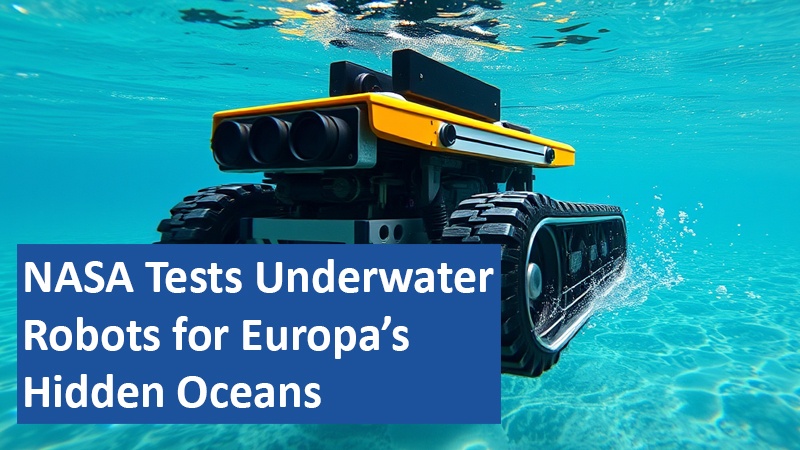NASA is breaking new ground with autonomous underwater robots designed to explore icy moons like Europa and Enceladus. These advanced “SWIM” robots are being developed to investigate the oceans hidden beneath thick ice layers, searching for evidence of extraterrestrial life. Recent tests at Caltech demonstrated their navigation and data-collection capabilities, marking a significant step toward exploring some of the most remote environments in the solar system.
By John Adams
Innovative Tools for Extreme Exploration

The Sensing With Independent Micro-swimmers (SWIM) project is developing small, autonomous robots to navigate the subsurface oceans of Europa and other icy moons. Each robot, roughly the size of a smartphone, is equipped with advanced propellers and sensors to measure temperature, pressure, salinity, and chemical composition. These robots will be delivered to Europa’s ocean via a cryobot, a probe designed to melt through the moon’s thick ice crust. Once released, the SWIM robots will operate independently to search for biosignatures—chemical or physical signs of potential life.
Testing Navigation and Collaboration
Autonomy is critical for these robots, as communication delays make real-time control impossible. In tests conducted at Caltech’s swimming pool, the robots successfully navigated complex patterns, including a systematic “lawnmower” scan to cover large areas. They also demonstrated coordination by working together to collect environmental data efficiently. One prototype showcased its precision by spelling out “JPL” underwater, symbolizing the technical advancements achieved. These trials highlight the robots’ ability to adapt to the challenging conditions they would encounter in Europa’s oceans.
Cutting-Edge Sensors for Detecting Life
The SWIM robots are equipped with miniaturized sensors that can identify subtle signs of life. Developed with input from Georgia Tech, these sensors detect variations in temperature, acidity, and chemical composition, including compounds like methane or amino acids. Such anomalies could indicate microbial activity or other biosignatures. By analyzing these data, the robots will help determine whether Europa’s ocean is habitable and capable of supporting life.
The Future of Space and Earth Exploration
While still in the prototype stage, the SWIM project is an integral part of NASA’s broader plans for Europa exploration. The upcoming Europa Clipper mission, scheduled to arrive in 2030, will provide vital data on the moon’s surface and guide the SWIM robots’ future deployment. These innovations could also benefit Earth, enabling research in extreme underwater environments such as polar ice caps or deep-sea vents. The potential for dual applications underscores the transformative nature of this technology.
NASA’s SWIM robots could revolutionize how we explore alien oceans and uncover the secrets of life beyond Earth.
Based on information from www.dailygalaxy.com and own research.